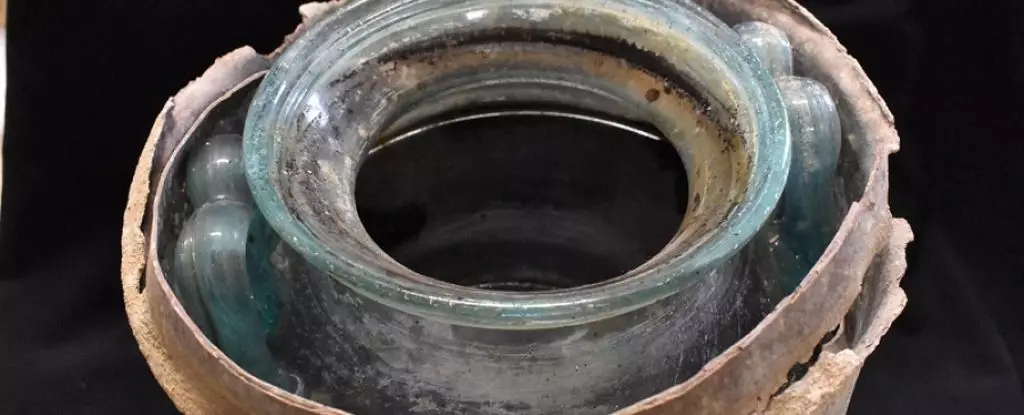A recent archaeological discovery in the Roman necropolis of Carmo in Spain has brought to light a jar of wine dating back approximately 2,000 years. The wine, still sealed and containing liquid, was found to be part of the grave goods buried alongside a Roman man. Interestingly, his cremated remains were placed inside the glass container before it was sealed, resulting in a unique and macabre combination of human dust and ancient wine.
The mausoleum in which the sealed glass urn was found is believed to have belonged to a specific family. The chamber, surprisingly still sealed, contained various luxurious grave goods such as patchouli perfume, jewels, fabrics, and glass objects. Upon opening a large lead container within the mausoleum, archaeologists found the glass urn, half-filled with a liquid substance, believed to be wine. While pouring wine onto cremated remains was a common funerary practice in ancient Rome, there is a possibility that the liquid entered the urn accidentally.
Chemist Daniel Cosano of the University of Cordoba led a team of researchers in conducting a series of chemical analyses on the ancient liquid. Various techniques, including the measurement of pH, examination of organic matter, and identification of chemical elements in mineral salts, were employed. High-performance liquid chromatography-mass spectrometry was used to identify polyphenols in the wine, revealing similarities to wines from nearby regions such as Montilla-Moriles, Jerez, and Sanlúcar. The absence of syringic acid, typically found in red wine, indicated that the original wine was a white varietal.
Despite efforts to pinpoint the exact origin of the ancient wine, researchers were unable to make a definitive conclusion due to the lack of contemporaneous local wines for comparison. However, similarities were noted between the chemical composition of the wine and modern wines from the region. The wine shared characteristics with the sweet wines of Montilla-Moriles, known for producing Poe’s famous Amontillado. The discovery of the ancient wine jar adds to the mystique of the burial chamber, shedding light on the funerary practices and preferences of the Roman era.
The Roman man interred with the wine jar was accompanied by five other individuals in the same chamber. Another glass urn in the vicinity contained the cremated remains of a woman named Hispana, who was not submerged in wine like some Roman women were. Her burial included amber jewels, a rock crystal jar of patchouli, and silk fabric. The Roman man’s urn also held treasures, including a gold ring engraved with Janus, the Roman god symbolizing time, transitions, and endings. Through these grave goods and artifacts, the Roman man and his counterparts are remembered in history, offering insights into their beliefs and customs.

Leave a Reply